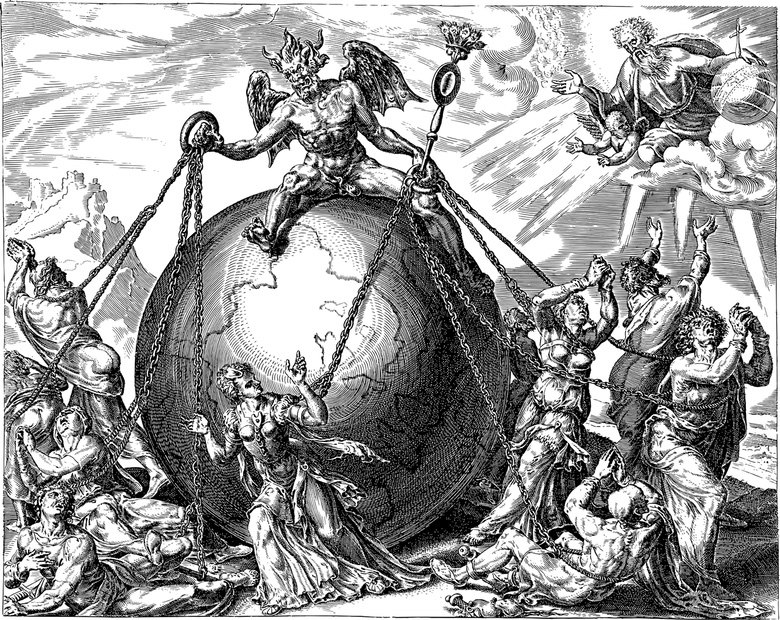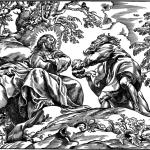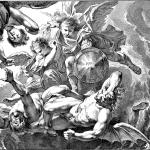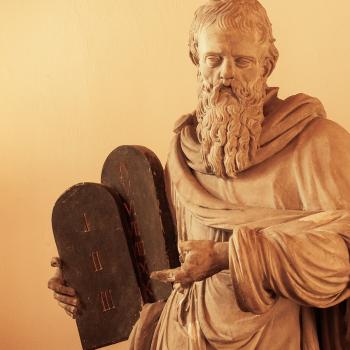
Following the Salem Witch Trials of the late-17th century, America was settling back into religious life. Religion was an important part of the week, but there was a group of people in the Colonies that wanted more. A number of religious leaders began to express concerns about the state of religion in the colonies. These leaders believed that the traditional forms of Christianity practiced in the colonies had become too formal and ritualistic. They feared the people were no longer experiencing a personal connection with God.
Even if you’ve never learned about the first Great Awakening, chances are it has affected your life. Those who grew up in a conservative church has felt the influence of this period of American history. We’ll look at some of the important figures of this movement and how they viewed Satan. Spoiler alert: Satan was real and looking to destroy.
The First Great Awakening
As the name implies, there were multiple awakenings in American religion. These are broken up by both time period and content. For now, we’ll focus on the first awakening – it makes sense to start at the beginning. While the First Great Awakening is defined from 1730-1740, there were pockets before and a few revivals after. However, we’ll keep it to this general time.
Preachers that found their calling during this period were often charismatic and vocal. Making a personal salvation decision was their main message. These traveling preachers (or “evangelists”) called on their listeners to repent of their sins and turn to God. They often used dramatic and theatrical techniques to capture their audiences’ attention, like shouting, singing, and fainting.
Two of the most influential preachers of this time were English preacher George Whitfield and American theologian Jonathan Edwards. Whitfield traveled back and forth from England to the Colonies preaching repentance. His focus was on individual experience and emotional commitment to Jesus. While Whitfield may not be a household name, most conservative Evangelicals know of Edwards. His sermon “Sinners in the Hands of an Angry God” is an imaginative description of a lost soul entering hell.
A Spider Over the Flames
The God that holds you over the Pit of Hell, much as one holds a Spider, or some loathsome Insect, over the Fire, abhors you, and is dreadfully provoked; his Wrath towards you burns like Fire; he looks upon you as worthy of nothing else, but to be cast into the Fire; he is of purer Eyes than to bear to have you in his Sight; you are ten thousand Times so abominable in his Eyes as the most hateful venomous Serpent is in ours.
– Sinners in the Hands of an Angry God, July 8, 1741
Edwards’ sermon depicts Satan as a fearsome enemy who is always lurking and seeking to ensnare people. Satan wants to lead people into sin and eternal damnation. Edwards warns his listeners that Satan’s power is great and that they must turn to God to be saved from his grasp.
Satan was not out of line. Rather, humanity is abhorred by God and deserve this torture. Satan already owns these people and is actively drawing more people to him. Both Edwards and Whitfield saw Satan as a personal entity that worked in the world to foil God’s plan. Satan entices his victims to sin and eventual hell – but God is still more powerful.
What Now?
This cosmic vision of Good and Evil is not new to American Christianity, but this period brought about imagery similar to that of Dante. Rhetorical use of terrifying visions like brought repentance through fear. These revivals had another lasting impact – the rise of new Christian denominations. Baptist and Methodist groups formed during this time and share a legacy.
Salem didn’t tire Satan out. In the eyes of Edwards and Whitfield, he was still seeking to destroy. His work was not to possess but to subtly distract and condemn. This vision of an active Satan is still prevalent in Conservative denominations – a lion looking to devour the lambs.

















